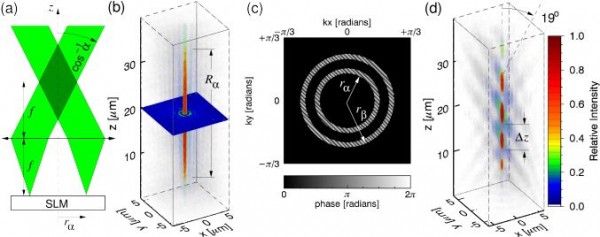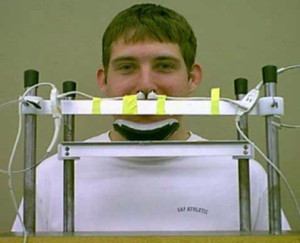Experiments
Does Nostalgia Keep You Warm?
Researchers at the University of Southampton and Sun Yat-Sen University collaborated to explore whether feelings of nostalgia help protect people against the cold. They conducted various experiments (published in the Journal Emotion) such as 1) putting people in a cold room, asking them to recall a nostalgic event from their past, and then asking them to guess the temp; and 2) asking volunteers to recall a nostalgic event while their hand was dunked in ice-cold water. [nbcnews.com]The researchers concluded that overall recalling nostalgic events "evinced greater tolerance to noxious cold." So instead of turning up your heater this winter you could save some money by wistfully remembering the good old days instead.
Why would nostalgia keep you warm? The researchers suggest that "the nostalgia-warmth link derives from a universal mental association between interpersonal affiliation (which nostalgia fosters) and warmth, which is rooted in infant-caregiver interaction."
But, of course, more research is necessary. For instance, the researchers propose that future investigations will explore whether "nostalgia functions in a different capacity for individuals reared in warm (compared to colder) climates. Conceivably, in colder climates nostalgia could primarily serve to ameliorate thermoregulatory (cold) discomfort, whereas in warmer climates it could primarily serve to ameliorate thirst."
Posted By: Alex - Sat Dec 08, 2012 -
Comments (9)
Category: Science, Experiments
What Makes Durian Stinky?
Durian is reputed to be the stinkiest fruit in the world, so researchers at the German Research Center for Food Chemistry recently set out to find out exactly what makes it so malodorous. They write in the Journal of Agricultural and Food Chemistry:
Their investigation involved a) shipping Durian by air freight from Thailand to Germany; b) extracting pulp from the fruit; and then c) analyzing the pulp by means of a "Trace GC Ultra gas chromatograph" equipped with a "tailor-made sniffing port":
This effort yielded "several new aroma compounds with interesting odors," but the authors of the study caution that further investigations are still required in order to "unequivocally assess the contribution of individual odorants to durian aroma."
Posted By: Alex - Sun Dec 02, 2012 -
Comments (7)
Category: Food, Science, Experiments
Feeling Like a Rat
Rats use whiskers to feel around in the dark. They navigate by "whisking" — moving their whiskers rapidly back and forth. Humans, however, don't have whiskers. But could people learn to navigate in the dark using artificial whiskers? That was the question posed by a recent experiment published in the Journal of Neuroscience.The researchers attached plastic whiskers to the fingers (not the cheeks, unfortunately) of blindfolded volunteers. These volunteers were then asked to try to identify the relative position of several poles on either side of them. The researchers discovered that the volunteers skill at this task improved significantly over time. So they were learning to use whiskers just as a rat would. The practical value of all this is that the researchers hope to develop finger whiskers for blind people.
Incidentally, if you read the abstract of the experiment, you would never know it had anything to do with rats and whiskers. The researchers describe their experiment as a study of "motor-sensory interactions in humans using a novel object localization task that enabled monitoring the relevant overt motor and sensory variables."

Posted By: Alex - Thu Nov 08, 2012 -
Comments (8)
Category: Animals, Science, Experiments
Decomposition of a Pig Underwater
Back in Jan 2009, I posted a video showing the decomposition of a pig. Here's a similar video, also showing the decomposition of a pig, but underwater this time. It was an experiment conducted in Feb 2012. The pig was in a cage to stop sharks from getting to it. Watch to the end to see the surprise visitor.
Posted By: Alex - Tue Oct 30, 2012 -
Comments (4)
Category: Death, Science, Experiments
Engage The Tractor Beam!!
Star Trek fans rejoice. A small scale demonstration moved a particle toward the tractor beam when two scientists focused a pair of Bessel beams at it. I'm already in over my head, so don't look for any further explanation here. But I can post a great graphic.
Large scale tractor beams of this type would probably destroy the object trying to be moved. Here's the link to the abstract at phys.org:
http://phys.org/news/2012-10-physics-duo-tractor-dual-bessel.html
Once a large scale tractor beam has been developed, what would you use it to do?
My first use would be to draw the moon closer, just to see if what "Bruce Almighty" predicted would happen.
Or to move the refrigerator to me, instead of me having to walk to it.
Posted By: gdanea - Fri Oct 26, 2012 -
Comments (4)
Category: Experiments
Seasick Sheep
University of Queensland PhD student Eduardo Santurtun is conducting research into whether sheep get seasick. Or rather, the effect of "ship motions" on sheep. But he's not studying the sheep on an actual ship. Instead, he's created a contraption (a modified flight simulator) that replicates the roll, pitch, and heave of a ship. His subjects spend hours a day inside this thing being gently see-sawed up and down, back and forth. This is all being done to help the sheep, not hurt them. His research is supported by the Centre for Animal Welfare and Ethics, which is concerned about sheep getting seasick and dying as they're transported from farms in Australia to consumers around the world. [qt.com.au, abc.net.au]
Posted By: Alex - Mon Oct 22, 2012 -
Comments (8)
Category: Animals, Science, Experiments
Singing Gibbons on Helium
I think a study of helium-sniffing singing gibbons qualifies as weird science. Link to the original article in the American Journal of Physical Anthropology. And you can hear the gibbons singing with and without helium either at eurekalert.org, which has the sound files posted, or in the Newsy Science video below.
Posted By: Alex - Sat Aug 25, 2012 -
Comments (6)
Category: Animals, Music, Science, Experiments
Nostril Dominance
People are either right-handed or left-handed. But are people also left-nostriled and right-nostriled? Yes, they are — as reported in an article published in the journal Laterality (Mar 2005). From the study:Result: The present data support these predictions: for both left-handers and right-handers the nostril that had the significantly greater airflow was ipsilateral to the preferred hand almost 60% of the time.
The researchers also discovered that people are pretty much useless at self-determining their own nostril dominance. (i.e. It's very hard to tell which nostril you're breathing more air through.) So they used a gadget that measured airflow into each nostril to get an accurate measure of nostril dominance.

Posted By: Alex - Sat Aug 04, 2012 -
Comments (7)
Category: Body, Science, Experiments
The sound of copulating flies
In order to test the theory that noisy copulating animals are at greater risk of being found and eaten by predators, German researchers mounted "dead, noiseless fly pairs" on the ceiling of a shed. The bats that lived in the shed ignored them. But when the researchers played the sound of copulating flies through loudspeakers, the bats attacked the loudspeakers. So, theory proven!Max-Planck-Gesellschaft has a video of the bats attacking the speakers, but unfortunately the video has no sound. And below is a youtube video of some copulating flies -- but again, you can't hear the flies, just some people in the background. So I still don't know what copulating flies sound like.
Posted By: Alex - Fri Jul 27, 2012 -
Comments (3)
Category: Animals, Insects and Spiders, Science, Experiments, Sexuality
Human falling into lava lake: a scientific experiment
Some researchers wanted to know what would happen if a person fell into the lava lake of the Erta Ale volcano in Ethiopia. Would the force of the impact be enough to break through the thick crust, or would the person simply lie on top of the crust and get toasted?To answer this important question, the researchers used a 30kg bag of trash as a stand-in for a human and threw it into the lava, from a height of 80 meters. Watch the video to see what happened. If they're true mad scientists, they'll find a way to repeat the test with a human body.
Posted By: Alex - Wed Jun 27, 2012 -
Comments (15)
Category: Science, Experiments

| Who We Are |
|---|
| Alex Boese Alex is the creator and curator of the Museum of Hoaxes. He's also the author of various weird, non-fiction, science-themed books such as Elephants on Acid and Psychedelic Apes. Paul Di Filippo Paul has been paid to put weird ideas into fictional form for over thirty years, in his career as a noted science fiction writer. He has recently begun blogging on many curious topics with three fellow writers at The Inferior 4+1. Contact Us |




